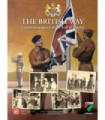Frais de port offerts à partir de 80€ (France métropolitaine)
Anglo-Scottish Border Raids 1513-1603.
BACKGROUND: For two hundred years, war waged back and forth across the border between England and Scotland. From Stirling Bridge to Bannockburn, the battles are famous, as are the protagonists: William Wallace, Robert the Bruce, and Edward I, Hammer of the Scots. By 1482, the unfortunate town of Berwick-upon-Tweed, once the richest port town in Scotland, had changed hands thirteen times. By the time Henry VIII ascended the throne of England in 1509, the fifty-mile-wide stretch of rolling hills and stunning vistas that straddle the border had seen decades of hardship and atrocity. Yet still the hardy families living on these frontier lands persevered. Unable to count on crops surviving until the harvest, they subsisted primarily on the livestock they could shepherd in the fields near their homesteads. When supplies ran low, raiding to steal what they needed from their neighbors was often the answer. Perhaps no Border story is more famous than the wife who served her husband his spurs on a plate: a clear sign that it was time for him to go raiding if he wanted to see his supper. Raids were often carefully planned operations with several border families uniting to steal livestock from a common foe in the dead of night. Cattle and sheep were the likely targets, often with hundreds of these creatures being stolen in a single raid. The reiver's goal was to herd their quarry to safety before the retaliatory “hot trod” pursuit could catch up and force an engagement. To combat this constant hostility, England and Scotland established the system of March Law. Each nation divided its border lands into an East, Middle, and West March with each of these six territories administered by a Warden responsible for keeping the peace. The Wardens were drawn from the most powerful families on the Borders, clans of great renown that could put upwards of a thousand men in the saddle in times of need. The March Law would have succeeded too, but for the fact that these same great families were usually the ones best equipped and most inclined to raid their neighbors. And thus the cycle of looting, raiding, and feuding among these families would continue for another century, throughout the reigns of both Henry VIII and his daughter the Virgin Queen Elizabeth.


















